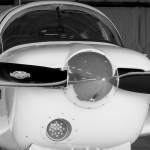Thoughts on revitalizing an under-utilized M20J?
-
Members Online
- Terraplane
- daytonabch04
- PhateX1337
- ElkoRandy20J
- Pinecone
- IvanP
- phrogpilot73
- ElderWhitehead1
- acekng1
- Lois
- Stetson20
- Planegary
- Tim-37419
- FLYFST
- TheAv8r
- LOCOLJ
- richardbrochu27
- 802flyer
- Sherifferic
- TCC
- Shadrach
- Stubby
- PeterB
- McMooney
- Jaystew324
- Deb
- Chris from PA
- takair
- hphillips
- 52Yankee
- N201MKTurbo
- thomas1142
- jma201
- Ryan ORL
- Entropy


Recommended Posts
Join the conversation
You can post now and register later. If you have an account, sign in now to post with your account.